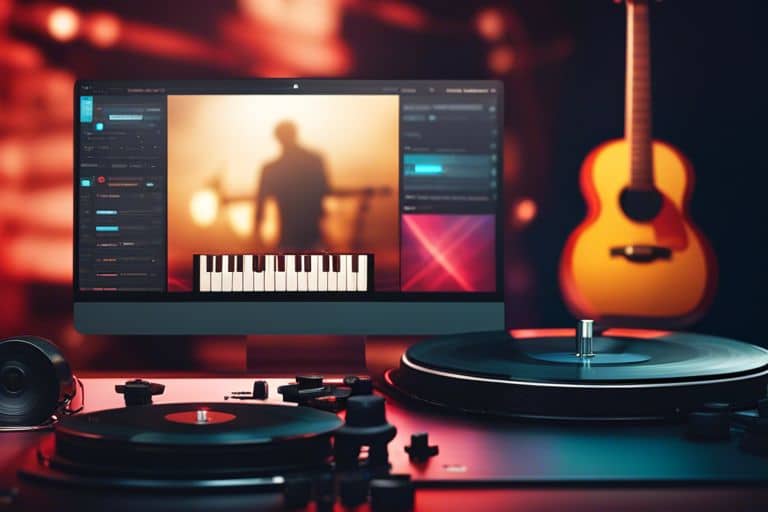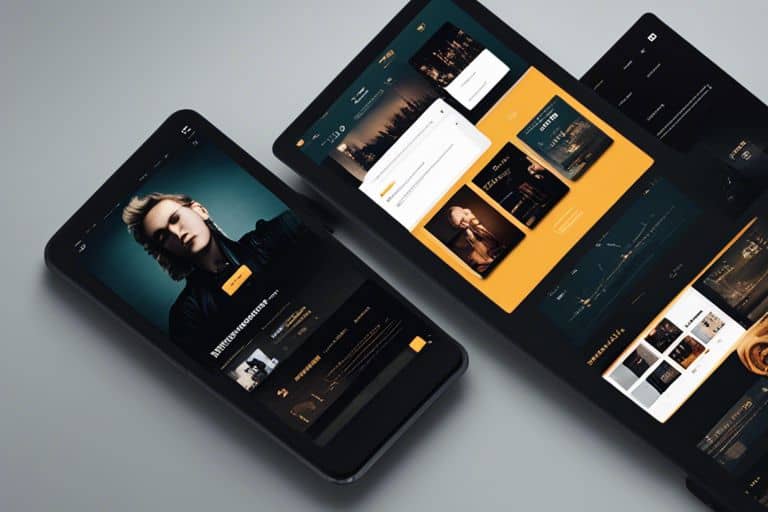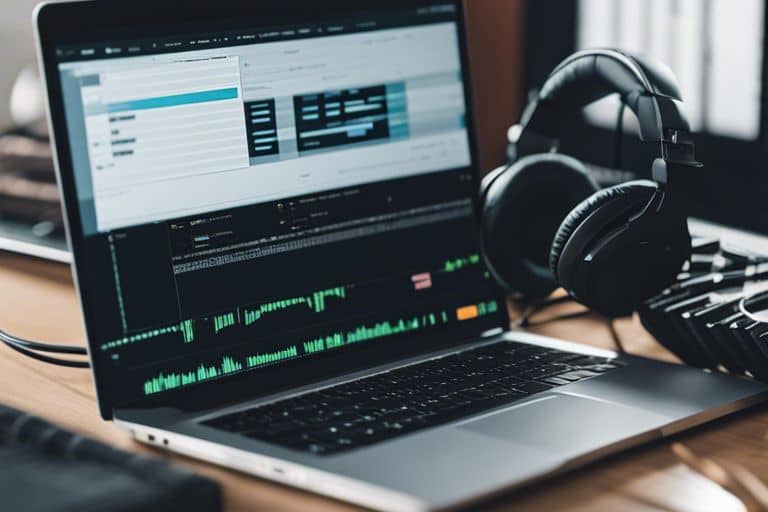
Most successful musicians understand the crucial role a well-designed website plays in cultivating their brand and connecting with fans. In today’s digital age, a visually appealing and user-friendly website is a powerful tool for musicians to showcase their music, sell merchandise, and engage with their audience. If you’re looking to create a stunning website that captivates visitors and effectively represents your music, follow these crucial tips that will set you on the path to success. For more in-depth tips on creating a music website, check out this comprehensive guide on How To Create a Music Website (13 Tips).
Types of Musician Website Designs
A musician’s website design plays a crucial role in showcasing their talent and connecting with their audience. In the matter of designing a website for musicians, there are several different approaches that can be taken. Below are some of the common types of musician website designs:
| Portfolio-Based Design | Interactive Experience Design |
| E-commerce Focused Design |
Portfolio-Based Design
For musicians looking to showcase their work and accomplishments, a portfolio-based design can be highly effective. This type of website design typically features a gallery of the musician’s past performances, music videos, and recordings. It allows visitors to get a comprehensive overview of the musician’s talent and style.
For a portfolio-based design, it is vital to have a user-friendly interface that makes it easy for visitors to navigate through the various sections of the website. Additionally, incorporating a music player that allows visitors to listen to the musician’s tracks while browsing the site can enhance the overall user experience.
Interactive Experience Design
To engage visitors and create a memorable experience, some musicians opt for interactive experience design. This type of website design incorporates elements such as animated graphics, parallax scrolling, and interactive music players to captivate the audience and leave a lasting impression.
To implement interactive experience design effectively, it is crucial to ensure that the website is optimized for both desktop and mobile devices. This will allow visitors to enjoy the interactive elements regardless of the device they are using. Additionally, integrating social media sharing buttons can help to increase the website’s reach and engagement.
For instance, interactive experience design can involve creating a virtual tour of the musician’s studio or a 360-degree view of a live performance. These immersive elements can help to create a unique and engaging experience for visitors, setting the musician apart from others in the industry.
E-commerce Focused Design
Musician websites that focus on e-commerce typically feature an online store where visitors can purchase music albums, merchandise, concert tickets, and more. This type of design is geared towards driving sales and generating revenue for the musician.
The design of an e-commerce focused musician website should prioritize simplicity and ease of use to encourage visitors to make purchases. Including high-quality images of products, detailed descriptions, and secure payment gateways are vital elements of this design approach.
The e-commerce focused design allows musicians to monetize their brand and reach a wider audience by selling their music and merchandise directly to fans. By providing a seamless shopping experience, musicians can maximize their online sales and grow their fan base.
Essential Tips for Crafting Your Web Presence
Some of the most important elements of a musician’s online presence include their website. Your website is often the first point of contact for fans and industry professionals, so it’s crucial to make a strong impression. Here are some important tips to help you craft a stunning web design that effectively showcases your music and brand.
- Ensure your website is user-friendly and easy to navigate
- Optimize your site for mobile devices
- Include high-quality images and videos of your performances
- Integrate social media buttons for easy sharing
Any successful web design strategy should prioritize the user experience to keep visitors engaged and coming back for more.
User Experience (UX) Fundamentals
The user experience is a key aspect of web design. It encompasses how users interact with your website and the overall satisfaction they derive from the experience. One of the most critical aspects of UX design is ensuring that your site is intuitive and easy to navigate.
The layout, content organization, and navigation structure of your website all play a crucial role in providing a seamless user experience that encourages visitors to explore your music and stay engaged with your brand.
Visual Aesthetics and Brand Consistency
To create a visually stunning website that effectively communicates your brand and music, pay attention to elements such as color schemes, typography, and imagery. Consistency in branding across all your online platforms is key to building a strong and recognizable identity.
Any successful musician’s website should reflect their unique style and aesthetic to create a memorable and cohesive online presence.
Plus, incorporating your brand colors, logo, and imagery consistently across your website helps reinforce your brand identity and creates a cohesive experience for visitors.
Optimization for Sound and Video Content
Fundamentals of optimizing sound and video content involve using high-quality media that loads quickly and seamlessly on your website. Compressing audio and video files without compromising quality is crucial for a smooth user experience.
Plus, optimizing your media files can also improve your website’s loading speed and overall performance, contributing to a positive user experience.
Step-by-Step Guide to Building Your Musician Website
To create a stunning website for your music career, you need to follow a structured approach that will ensure you have a strong online presence. This step-by-step guide will walk you through the crucial elements required to build a successful musician website.
| Planning and Design Considerations | Platform Selection and Domain Registration |
For a musician website, it is crucial to first determine the purpose of your site. Are you looking to showcase your music, sell merchandise, promote upcoming gigs, or connect with your fans? Understanding your goals will help you design a website that effectively meets your needs and resonates with your audience. |
Guide yourself through the process of choosing the right platform for your website. Consider factors such as ease of use, customization options, and integration capabilities with third-party tools. Additionally, select a domain name that is memorable, reflects your brand, and is easy to spell. |
Creating Content and Integrating Social Media
When creating content for your musician website, focus on high-quality images and videos that showcase your talent. Write engaging bio, update your discography, and include a calendar of your upcoming events. Integrate social media plugins to encourage fan interaction and sharing of your content across different platforms.
Media plays a crucial role in the success of a musician’s website. Utilize platforms like YouTube, Spotify, and SoundCloud to share your music and reach a wider audience. Maintain consistency across all your social media channels and website to reinforce your brand identity and keep your fans engaged.
Factors to Consider for Long-Term Success
Unlike short-term trends that come and go, long-term success in web design for musicians requires careful planning and consideration of several key factors. By focusing on these aspects, musicians can build a strong online presence that attracts and retains fans for years to come.
- SEO Strategies for Musicians: Long-term success in web design for musicians heavily relies on effective search engine optimization (SEO) strategies. By optimizing your website with relevant keywords, meta tags, and quality content, you can improve your visibility on search engines and drive organic traffic to your site.
- Regular Updates and Content Management: Consistently updating your website with fresh content is imperative for long-term success. By regularly adding new music releases, tour dates, blog posts, and other engaging content, you can keep your audience interested and coming back for more.
SEO Strategies for Musicians
Long-term success in web design for musicians depends on implementing effective SEO strategies. By focusing on keyword research, on-page optimization, and off-page SEO tactics, musicians can improve their search engine rankings and increase their online visibility over time.
Strategies for optimizing meta tags, creating quality backlinks, and producing relevant content can help musicians establish a strong online presence and reach a wider audience. The importance of SEO cannot be underestimated when it comes to long-term success in the competitive music industry.
Regular Updates and Content Management
Success in web design for musicians also hinges on regular updates and effective content management. By consistently adding fresh content, updating tour schedules, and engaging with fans through blogs and social media, musicians can keep their audience informed and interested in their work.

The Pros and Cons of DIY vs Professional Web Design
Despite the many options available for creating a website, musicians often find themselves debating between do-it-yourself (DIY) web design and hiring a professional to handle their online presence. Each approach has its own set of advantages and disadvantages that should be carefully considered before making a decision.
| DIY Web Design | Professional Web Design |
| Cost-effective | High-quality design |
| Full control over the design | Expertise and experience |
| Quick setup process | Customized solutions |
| Limited technical support | Technical support and maintenance |
| Potential for limited functionality | Scalability for future growth |
| Time-consuming for beginners | Professional branding and image |
Cost Implications
Cons: One of the main drawbacks of DIY web design is the potential for hidden costs. While initial setup costs may seem low, additional expenses can quickly add up for domain registration, web hosting, software plugins, and ongoing maintenance.
On the other hand, hiring a professional web designer may require a larger upfront investment, but it can save money in the long run by avoiding costly mistakes and ensuring a high-quality, well-functioning website.
Control and Flexibility
Professional: When working with a professional web designer, musicians can have greater control and flexibility over the design and functionality of their website. Professionals have the expertise to create custom solutions tailored to the specific needs and branding of the musician, allowing for a more polished and cohesive online presence.
Implications: By opting for a professional web design, musicians can ensure a seamless user experience and a visually appealing website that reflects their unique style and identity. The control and flexibility provided by professionals can lead to a more successful online presence and improved engagement with fans and visitors.
Summing up
Designing a stunning website for musicians requires a thoughtful and strategic approach. By incorporating these imperative tips such as choosing a user-friendly platform, optimizing for mobile devices, creating a visually appealing layout, showcasing compelling content, and integrating social media, musicians can effectively showcase their talent and grow their fan base online. With the right design elements in place, a musician’s website can become a powerful tool for connecting with audiences and furthering their career in the music industry.
Continue reading
Purely you



Leave a Reply